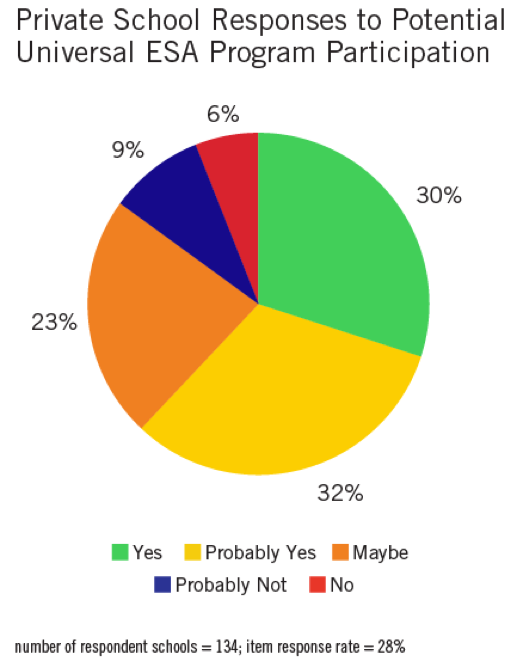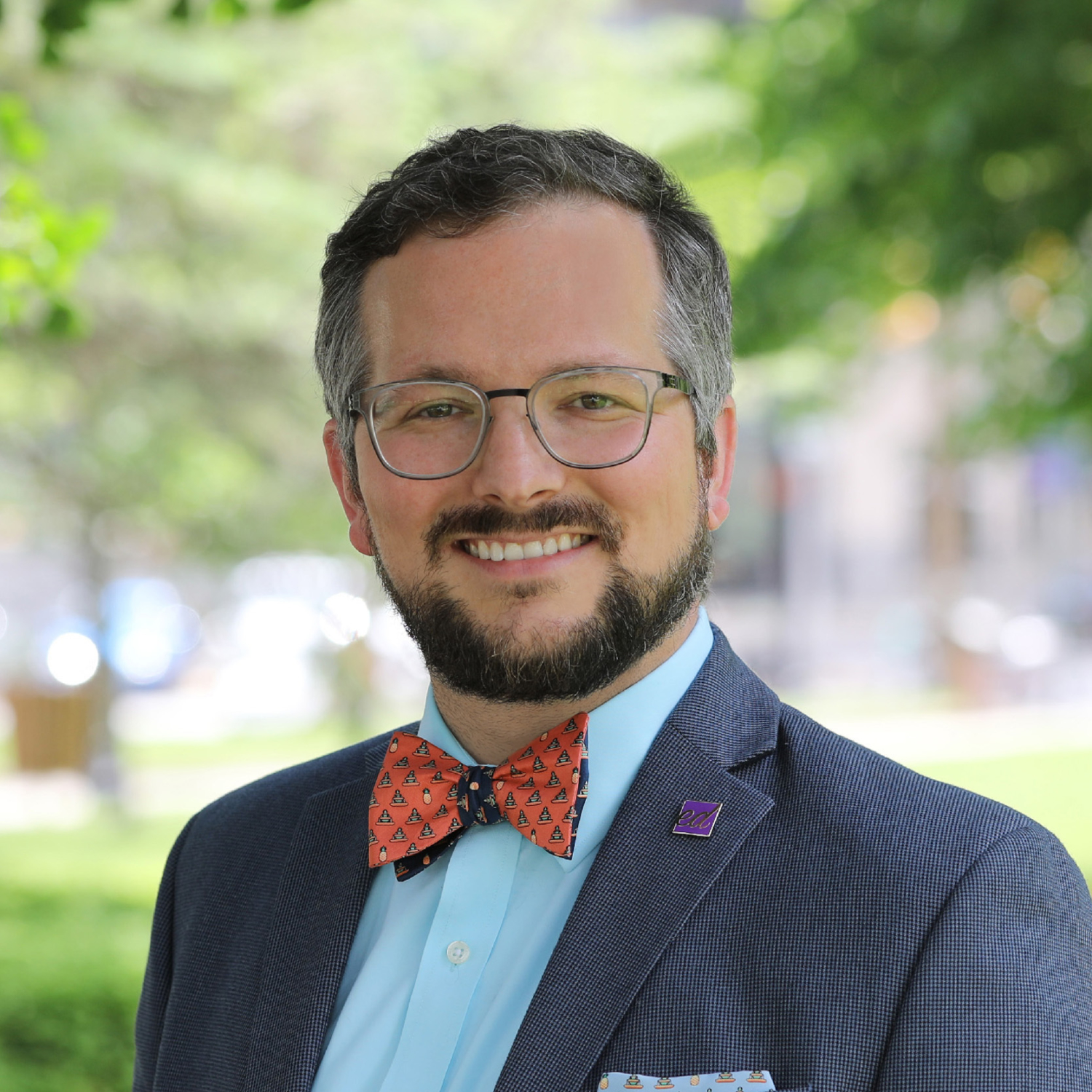Arizona bill seeks to make ESAs available to all by 2020
UPDATE April 7, 2017
This nearly universal expansion of Arizona’s education savings accounts (ESA), SB 1431, passed out of the Senate last night in a 16-13 vote. Since our original publication of this blog post, an identical companion bill—HB 2394—was introduced. The House bill also passed out of its chamber last night in a 31-28 vote. Because both bills are identical, these bills do not have to cross chambers for concurrence. This nearly universal ESA expansion has been transmitted to Gov. Doug Ducey’s desk, and he tweeted his intention to sign.
When parents have more choices, kids win. Looking forward to signing #SB1431 tonight. #AZboundless
— Doug Ducey (@dougducey) April 7, 2017
Since his tweet, Gov. Ducey has signed the Senate bill into law, creating the strongest educational choice program in America to date in terms of student eligibility. (Note: Gov. Ducey is only required to sign one of the two companion bills for the expansion to become law.)
A few changes were made to the bill before its passage:
- Parents may no longer save unused ESA dollars for college savings accounts.
- ESA students without disabilities in grades 3–12 who are enrolled full-time at a qualifying school must take one of the following tests each year: any nationally norm-referenced test, the state assessment, an AP exam that assesses math and reading or any college placement exam that assesses math and reading. The outcomes of that testing must be made available to parents; aggregate results for all students shall be made available to the public upon request by schools that administer one of the applicable tests and enroll at least 50 students who are using an ESA.
- ESA amounts are different now depending on students’ circumstances. ESA amounts are worth 90 percent of the base for whichever school type the student comes from (charter or district), but ESA amounts are worth 100 percent of the base for low-income students. (A low-income student is defined as a foster child or a child in a family of four with annual income that is 250 percent of the federal poverty line ($60,750) or less.)
- Beginning in Fiscal Year (FY) 2023, this program caps enrollment in the program at FY 2022 levels.
-
In 2020–21, all K–12 students are eligible, provided they still meet the 100 days prior public school enrollment requirement.
—
Arizona lawmakers currently are considering a bill that would expand the nation’s first education savings account (ESA) program.
This bill, if passed, would expand Arizona’s Empowerment Scholarship Accounts to every student in Arizona by August 2020 using a stepwise approach.
Yes, Arizona is on its way to a completely universal educational choice program!
The expanded ESA program would continue to operate as it has in previous years, with three additional grades of students being eligible each year until 2020. Here’s how it would work:
Student Eligibility
Students must have previously attended public school for at least 100 days of the prior fiscal year and met one of the following characteristics: (1) received a scholarship from an STO under Lexie’s Law, (2) attended a “D” or “F” letter-grade school or school district, (3) been adopted from the state’s foster care system, (4) is already an ESA recipient or (5) the child lives on a Native American reservation. Students eligible to attend kindergarten are also eligible provided they meet one of the above criteria. Additionally, children of active-duty military members stationed in Arizona, children whose parents were killed in the line of duty and siblings of current or previous ESA recipients are eligible. Children of active-duty members of the military or whose parents were killed in the line of duty are not required to attend a public school prior to applying for an ESA. Finally, preschool children with special needs are also eligible and are not required to have attended a public preschool program prior to applying.
Beginning in 2017–18, all kindergarteners, first-graders, sixth-graders and ninth-graders are eligible. In 2018–19, those students and students in grades two, seven and ten are eligible. Beginning in 2019–20, those students and students in grades three, eight and eleven are eligible. In 2020–21, all K–12 students are eligible.
Student Funding
ESAs are funded at 90 percent of the charter school per-student base funding. For the 2015–16 school year, that amounted to $4,645 (K–8) or $4,904 (9–12) for students who do not have special needs. Students with special needs receive additional funding, and those amounts vary depending on the services the student’s disability requires.
Allowable Uses
Funds may be used to pay for:
- Tuition and fees at an eligible private school
- Online learning programs
- Textbooks, curriculum and other instructional materials
- Tutoring services
- Community college costs
- Higher education expenses
- Fees for testing, including nationally norm-referenced tests, AP exams and college placement exams
- Services for special needs students
- Costs associated with an annual education plan conducted by an independent evaluation team
Any unused funds still left in an account at the end of the school year may be rolled over to the next school year, which can continue until a student graduates from college or four consecutive years after a student graduates from high school, if they have not enrolled in a post-secondary institution.
Regulations
Parents must sign an agreement to provide an education in the subjects of reading, grammar, mathematics, social studies and science; not enroll the student in a school district or charter school; release the school district from all obligations to educate the student; not accept a scholarship under any of Arizona’s tax-credit scholarship programs; use the money deposited in the ESA for purposes specified in the law and spend accumulated ESA dollars on basic education subjects.
Participating providers must be licensed or accredited.
Beginning in 2017–18, students in grades three through twelve must take a nationally-norm referenced test, AP exam or college placement exam, and the results must be reported to the parents.
What the Research Says
Last fall, I surveyed Arizona’s private schools, and my report Exploring Arizona’s Private Education Sector focuses on the aggregated survey responses of 167 private schools around the state.
 Nearly two-thirds of Arizona private schools (62 percent) said they would or probably would participate in Arizona’s ESA program if it was expanded to include all students.
Nearly two-thirds of Arizona private schools (62 percent) said they would or probably would participate in Arizona’s ESA program if it was expanded to include all students.
In that same survey report, I projected that there were approximately 16,500 open seats for PK–12 students in Arizona’s private schools in 2016–17.
That’s not the most encouraging news for the more than 1 million Arizona public school children that would eventually be able to apply for an ESA if the legislature expands the program. However, it is important to point out that while many ESA families have used their funds to pay for private school tuition, 28 percent spent the money on multiple learning services.
All ESA parents in Arizona surveyed for Jonathan Butcher and Jason Bedrick’s Schooling Satisfaction: Arizona Parents’ Opinions on Using Education Savings Accounts reported being more satisfied with their children’s current education compared with their previous public school.
Arizona has an opportunity to increase the number of satisfied ESA families by expanding the state’s ESA program so that all K–12 students in the state can have personalized learning options. We here at EdChoice thank the legislators who are paving the way for Arizona to continue being a leader in educational choice.




